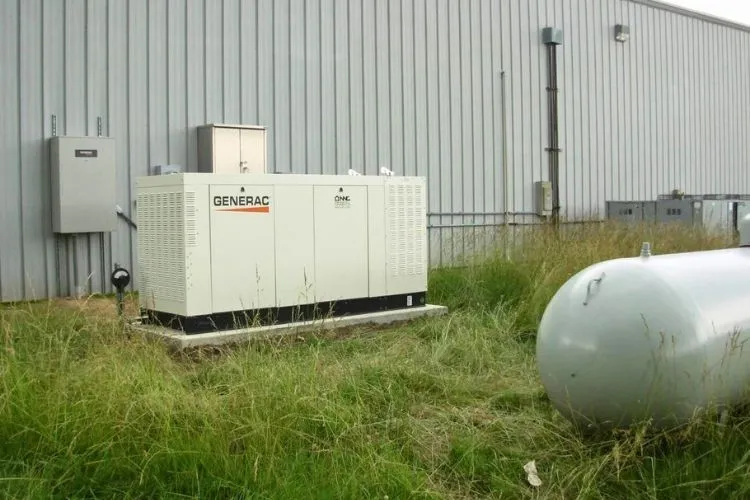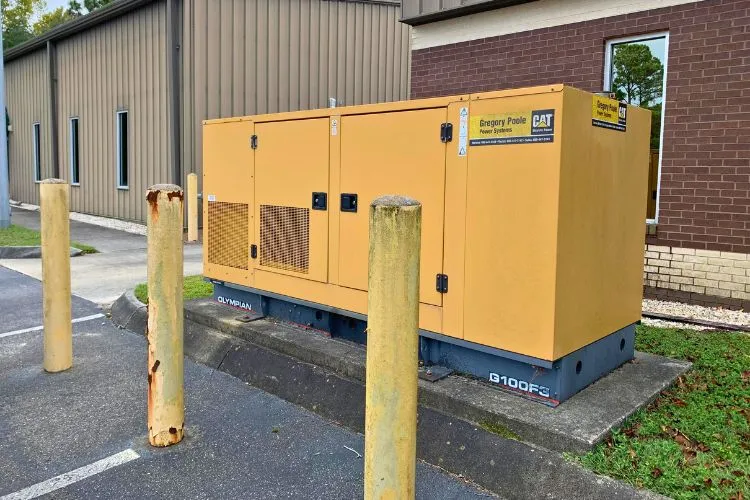In times of uncertainty, an emergency generator is more than just a backup—it’s a vital lifeline. Securing the right size emergency generator ensures that, should the power go out, your essential appliances and systems stay operational.
In times of uncertainty, an emergency generator acts as a beacon of light, quite literally.
Securing the right size emergency generator ensures that, should the power go out, your essential appliances and systems remain up and running.
The question of “What size emergency generator do I need?” isn’t just common; it’s crucial.

Understanding Generator Sizes
To start, let’s talk about kilowatts (kW), the unit of measure for generator size. One kilowatt equals 1,000 watts.
The size of the generator you need depends on the total wattage of the appliances and devices you wish to power.
There’s a key distinction between starting watts (the surge of power needed to start an appliance) and running watts (the power needed to run the appliance after it starts).
Both figures are vital in determining the right generator size.
What Size Emergency Generator Do I Need?
The first step in choosing a generator is to list the appliances and devices you consider essential during a power outage. Once listed, determine both the starting and running watts for each item.
This information is often found in the appliance manual or on a data plate on the device. To ensure accuracy, use a printable checklist to organize this information as you gather it.
The sum of the starting watts for all your appliances gives you the minimum surge capacity your generator needs to start your equipment.
Similarly, adding up the running watts tells you the continuous capacity required to keep everything running.
Types of Generators
Generators come mainly in two flavors: portable and standby. Portable generators are smaller, less expensive, and can be moved where needed, but they generally have lower power capacities.
Standby generators, on the other hand, are permanent installations that can power your entire home or office. They turn on automatically during an outage but are more costly.
Impact of Geographic Location and Weather Conditions
Your location plays a role in deciding the right generator size. If you live in an area prone to severe weather, your power needs might be higher.

For example, homes in colder climates might prioritize heating systems, while those in hotter regions might focus on keeping air conditioning running.
Real-World Application
Consider three scenarios: a small home, a large home, and a small business. A small home might only need a generator with 5 to 7 kW to power essential systems.
A large home, with more appliances or a well pump, might need a generator with 10 to 20 kW.
A small business, depending on its operations, might require a generator with over 20 kW to ensure that critical systems remain operational.
Pro Tips for Choosing the Right Size Generator
Think about future expansion. If you plan to add more appliances or a new air conditioning unit, consider getting a generator with a higher capacity than you currently need.
This foresight can save you from needing to upgrade your generator prematurely.
Also, don’t overlook the value of a professional assessment. A certified electrician can provide insights and recommendations tailored to your specific needs and local regulations.
Safety Precautions and Maintenance
Safety is paramount. Keep your generator outside to avoid carbon monoxide poisoning and ensure it is properly grounded. Check your generator and perform any necessary maintenance regularly to ensure it’s ready when you need it.
Cost Considerations
The initial purchase price of emergency generators ranges widely, with standby models costing more than portable ones.
Installation by a licensed professional adds to the expenditure, particularly for standby generators requiring permanent placement and electrical wiring.

Operating expenses, too, can escalate as fuel consumption rates depend on the generator’s size and the type of fuel used. Maintenance is an ongoing cost, crucial for reliability and efficiency.
To navigate budget constraints, understand your power priorities and select a generator that just meets your essential requirements.
Investing in an energy-efficient model, though pricier upfront, can reduce long-term fuel and maintenance costs.
Environmental Impact
Emergency generators, while indispensable during power outages, have a noteworthy environmental footprint primarily due to carbon emissions and fuel efficiency.
Models powered by fossil fuels—diesel, gasoline, natural gas, and propane—release CO2 and other pollutants, impacting air quality and contributing to climate change.
Diesel engines, though fuel-efficient, produce higher particulate emissions compared to other fuels.
Opting for generators that comply with local emission standards and are certified for fuel efficiency can mitigate these environmental impacts.
Additionally, considering alternative fuel options such as biodiesel or exploring newer, cleaner technologies like solar-powered or battery backup systems can further reduce the ecological footprint of maintaining emergency power supplies.
Frequently Asked Questions (FAQs)
What happens if my generator is too small?
If your generator is too small, it won’t be able to start or run your essential appliances when needed. This overloading can damage both your generator and your appliances.
Can I use multiple small generators instead of one large one?
Using multiple small generators is possible but not always practical. It can be more costly and complicated. A single, properly sized generator is usually the better choice.
How do I account for appliances with high starting watts?
When calculating your total power needs, always use the highest starting wattage among your appliances as part of your total. This ensures your generator can handle the initial surge when appliances start.
Is it better to oversize my generator for future needs?
Oversizing a little for future expansion is wise but avoid going too large as it can lead to inefficiency and increased costs.
How often should I reassess my emergency generator size needs?
Review your generator size needs at least every few years or whenever you make significant changes to your power usage, such as adding new appliances or systems.
Conclusion:
Selecting the right size emergency generator is a balance of understanding your power needs, anticipating future changes, and considering environmental factors.
While the process requires some effort, the peace of mind it brings during an outage is invaluable.
Remember, consulting with a professional can provide personalized advice and make the decision process smoother.
